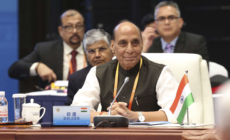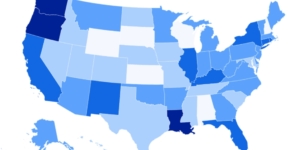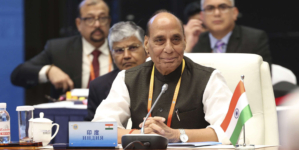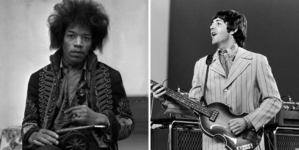-
Meta AI’s new chatbot raises privacy alarms - 15 mins ago
-
Where is this mother of 2, and what happened to her? - 26 mins ago
-
Bucks to Waive Damian Lillard After Agreeing to Deal With Myles Turner - 29 mins ago
-
Texas A&M Announces Major Changes After NCAA Settlement - 33 mins ago
-
High incomes and good work-life balance: See which U.S. cities have the best job markets. - 41 mins ago
-
Fox News Entertainment Newsletter: LeAnn Rimes’ teeth fall out during concert, Jana Kramer’s career regrets - 45 mins ago
-
Teacher murdered and dismembered by stranger; Couple killed and buried in the yard by granddaughter – TCNPOD - about 1 hour ago
-
Map Shows How Many People Will Lose Healthcare in Each State Under Tax Bill - about 1 hour ago
-
TE Darren Waller Unretires, Gets Traded to Dolphins - about 1 hour ago
-
Michael Jordan’s one-time Chicago mansion listed on Airbnb - 2 hours ago
Ukraine Sees Mixed Results at the 2025 NATO Summit | Opinion
Foreign officials and senior delegates met at The Hague for the 2025 NATO summit last month. During the two-day event, they emphasized the importance of collective security, explored ways to enhance the defense industrial base, and addressed Alliance defense spending. Aside from these topics, NATO members also discussed the organization’s relationship with Ukraine, as well as Russia’s ongoing war.
In previous years, NATO-Ukraine relations were a key focus of the summit. In 2022, NATO members stated that they would directly contribute to Ukraine’s defense. They also openly condemned Russia’s “war of aggression against Ukraine,” and members agreed to send weapons and technology to Ukraine. Then, in 2023, Alliance members established the NATO-Ukraine Council, a body that “advance[s] political dialogue, engagement, cooperation, and Ukraine’s aspirations for membership in NATO.” The NATO-Ukraine Council also “provides for joint consultations, decision-making, and activities.” Outside of the establishment of this group, NATO members removed a membership action plan requirement for Ukraine.
FREDERICK FLORIN/AFP via Getty Images
During the 2024 summit, NATO members stated that they would “station a senior civilian officer in Kyiv” so that Ukrainian officials could work more closely with NATO representatives. They also established the Ukraine Compact program that would “provide Ukraine with weapons, ammunition, and training necessary to repel Russian forces.” The discussions held at the 2022, 2023, and 2024 summits, along with the actions taken during and after the meetings, signaled that the Alliance was ready, willing, and able to assist Ukraine in its fight against Russian aggression.
Events at the 2025 NATO summit, however, presented a different tone. The NATO-Ukraine Council was initially supposed to be a prominent part of the summit. In addition, Ukrainian President Volodymyr Zelensky was to play a key role alongside NATO Secretary-General Mark Rutte and other officials.
But the agenda significantly changed. This was reportedly because the United States did “not see Ukrainian security as essential to European security,” and the U.S. wanted Ukraine to have less involvement at the 2025 summit. As a result, President Zelensky was only invited to the NATO-Ukraine Council working dinner event. This marked a significant shift from previous NATO summits, during which President Zelensky held several high-level meetings with officials from NATO member states. Additionally, not everyone attended the NATO-Ukraine Council dinner. This further suggested that NATO members had relegated the importance of NATO-Ukraine relations.
Furthermore, some officials publicly denounced Ukraine’s future with the Alliance. During the 2025 NATO summit, Hungarian Prime Minister Viktor Orbán said that “NATO has no business in Ukraine.” Similarly, members of the Trump-Vance administration stated that Ukraine should not join NATO.
The declaration issued at the end of the 2025 NATO summit saw a change in tone regarding Russia’s ongoing invasion of Ukraine. Unlike the NATO summits from 2022 to 2024, which mentioned Russia’s war and NATO’s relationship with Ukraine dozens of times, the 2025 joint statement only listed Ukraine twice. The declaration also did not condemn Russia’s war.
This was a significant departure from previous summits. Many supporters of Ukraine were left disappointed. They were puzzled by NATO’s new approach, and some even argued that this was a victory for Russia.
Critics will be right to question why NATO took a lesser approach in condemning Russia’s war in the NATO declaration this year. But actions speak louder than words.
During the summit, Alliance members committed to future assistance to Ukraine by linking aid to the new 5 percent annual gross domestic product (GDP) threshold for defense spending. This is particularly significant, as the decision is a victory for both NATO and Ukraine.
Including defense aid to Ukraine in the calculation of the 5 percent GDP threshold will help NATO members meet this commitment. It also allows Ukraine to continue defending itself against Russia. Intertwining aid to Ukraine with NATO’s defense framework suggests that Ukraine will continue to be part of the Alliance’s strategic planning. This is much more important to Ukraine than words issued in the summit’s final declaration.
In addition, NATO members pledged to provide €40 billion in defense aid to Ukraine in 2025. According to reports, €35 billion in security assistance has already been supplied to Ukraine this year. This suggests that, despite some political tensions within the Alliance toward Ukraine and Russian aggression, NATO members remain committed to supporting Ukraine.
Finally, while Zelensky was not as involved as he had been in the 2025 NATO summit as in previous years, he did still meet with Secretary-General Rutte. In addition, NATO Deputy Secretary General Radmila Shekerinska reaffirmed that NATO is committed to “sustain[ing] and strengthen[ing] support to Ukraine.”
Overall, the 2025 NATO summit presented mixed messages to Ukraine. On the one hand, NATO has articulated that it will continue to provide unwavering support for Ukraine. It will send tens of billions of euros in defense assistance to Ukraine. Additionally, NATO members will assist Ukraine in strengthening its defense industrial base. Finally, aid to Ukraine will be intertwined with defense spending commitments made by NATO members.
But on the other hand, Ukraine’s role at the 2025 NATO summit was relegated. Several officials from member states questioned or criticized Ukraine’s future with the Alliance. Finally, supporters of Ukraine were hoping for firmer commitments from NATO during the summit, but this never came.
Ukraine received mixed results during the 2025 NATO summit. Given this ambiguity, time will tell how the NATO-Ukraine relationship will unfold.
Mark Temnycky is a nonresident fellow at the Atlantic Council’s Eurasia Center and a freelance journalist covering Eurasian affairs.
The views expressed in this article are the writer’s own.
Source link































